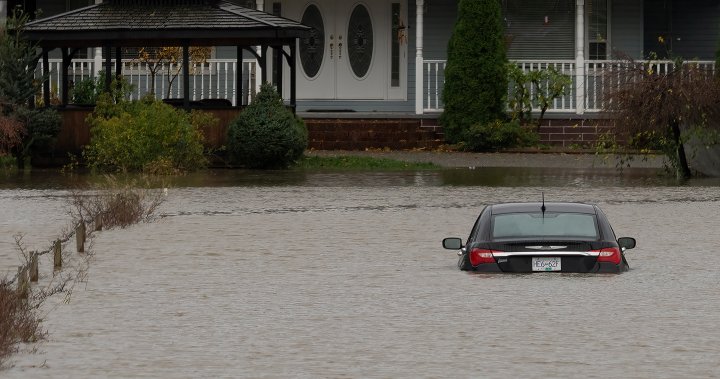If you own – or even rent – property in Florida, you have probably noticed that the cost of home insurance in the Sunshine State does not come cheap. Florida is one of the places in the U.S. that is most at risk to the whims of climate change – stronger hurricanes and storm surges, especially.
But insurers have been taking that risk into account with greater diligence as climate-fuelled extreme weather gets worse. Some, like AAA or Farmers Insurance, are either dialling back or getting out of the Florida insurance market completely. In California, State Farm has called it quits.
“We have seen a very, very dramatic increase in insurance premiums, both commercially and residentially,” said Bill Hughes, the executive director of applied research at the Bergstrom Real Estate Center at the University of Florida.
But it turns out that insurance premiums are still not high enough to dissuade people from moving or snowbirding in Florida; the state adds about a thousand new residents every day, despite the known risk of hurricanes, flooding and eventual sea level rise.
Canadian insurers are also watching the trends carefully and adjusting where needed, though the Insurance Bureau of Canada does not foresee any regions becoming ‘uninsurable’ in Canada in the near future.
In the United States, homeowners, and prospective homeowners, have the benefit of rich data that allows them to make informed decisions about climate-related risks, a growing consideration in real estate decisions.
In Canada, not so much.
Flooding is the top weather-related hazard facing property owners in Canada; flooded homes and basements cost insurers around $2 billion a year. But in most communities, residents and insurers are flying blind because flood maps are 20 to 25 years out of date.
“More data needs to become available so that we can put appropriate measures into place to reduce these risks,” Kathryn Bakos says.
Bakos is the managing director of finance and resilience at the Intact Centre on Climate Adaptation at the University of Waterloo. It’s one of the few organizations in Canada that tracks the connection between how much a property is at risk from harm imposed by climate change, and how those risks affect its value.
But getting the information has never been easy, Bakos told Global News.
Global News reached out to the Canadian Real Estate Association, the BC Real Estate Association and the Ontario Real Estate Association (OREA). All said they did not have property-specific flood information.
Bryan Murao, a property assessment expert with BC Assessment, told Global News in an email that his organization “wouldn’t have any flood risk data available beyond the more general floodplain maps that are available.” Murao did, however, indicate that past flood events are factored into property assessments – though this hardly provides real-time or future flood risk information to prospective buyers.
Bakos says, “We approached national and provincial (real estate) associations to give us the data, to work with us…. They would not provide us with that data. They didn’t want that to be publicly available.”
Get the latest Money 123 news.
Sent to your email, every week.
This, she says, “signals to me that they understand that if this data was public, that it potentially could influence housing prices.”
So, to get relevant information, her team painstakingly reached out to individual realtors across the country to get a sense of how climate-imposed risks affected property values.
It turns out, a lot.
Climate risks and real estate valuations
Nationwide, the team at the Intact Centre found that flood risk resulted in an 8.2 per cent decrease, on average, in the value of real estate in Canada. Catastrophic flooding also resulted in homes sitting on the market for approximately 20 per cent longer than they would have had flood risk not been there.
Some communities had it worse than others: most of the flood risk in Canada is concentrated among the 10 per cent of highest-risk properties, which are at risk of flooding over and over again. This might explain why the notion of weather-related extremes has not yet trickled down to the average homeowner or realtor’s consciousness – yet.
In 2017, devastating flooding in Gatineau, Que., resulted in a 17.1 per cent decrease in home values in the flood-risk neighbourhoods that were most affected. Flooding in Ottawa in April 2019 resulted in a 10.1 per cent decrease in property valuations in the affected community.
In some cities, such as Fredericton, N.B., there are neighbourhoods that are constantly getting flooded, year after year; in those cases, flood risk calculations are already ‘baked’ into real estate valuations.
But where data is sorely missing are those places that used to flood every 50 or 100 years, but are now getting soaked much more frequently. Places such as Abbotsford, B.C., Burlington, Ont., or, for that matter, Ottawa.
In the United States, the First Street Foundation, a research and technology nonprofit working to define America’s climate risk, has hydrologists on staff to go county by county across the country to see how extreme weather is affecting property values.
The head of climate research at First Street, Jeremy Porter, says more than 3.2 million people have left communities affected by weather extremes, leading to so-called “climate abandonment areas.”
Many of those places are nowhere you would expect – like Miami, Houston or San Francisco, the obvious places for risks like hurricanes, devastating storms or extreme fires.
Instead, people are abandoning less high-profile communities that are at high risk of weather extremes. These include sparsely populated parts of the Midwest or in ‘Tornado Alley.’ The reason, Porter says, is there’s less incentive for people to stay put in communities that have fewer economic opportunities.
In other words, no sun, sand – or significant economic growth to keep people staying despite extreme weather risks.
But First Street predicts that in the not-so-distant future, risky areas, such as the beach in Fort Myers that got obliterated by hurricane Ian in 2022, might also turn into ‘climate abandonment’ areas.
“Over the next 30 years, our projections are that some of these risky growth areas in the south and in the west are going to start to also look like these Midwestern areas,” Porter said.
Factoring in climate risk
So what is a prospective homeowner to do? In the absence of readily accessible data, Bakos says, ask a lot of questions.
“You want as much information as possible when you’re looking at buying a home – whether it’s in a floodplain location, a (wildfire) interface development,” said Elton Ash, the former executive vice-president of RE/MAX Canada, in one of his last interviews before retiring last fall.
“Awareness is building and people are becoming much more conversant and talking about environmental impact and how that can affect their home choice.”
The real estate industry is also acutely aware that climate change as a risk factor can no longer be ignored.
In the U.S., real estate agencies such as Redfin are increasingly showing a ‘climate risk’ score alongside their MLS listings. The First Street Foundation’s riskfactor.com app allows buyers and sellers to plug in an address and get a climate risk analysis of their property.
That has yet to happen in Canada with any consistency.
The feds say they are working on a “Climate Adaptation Home Rating Program” (CAHRP) modelled along the lines of the successful EnerGuide program. But Natural Resources Canada, the federal department responsible for weather-related risk mitigation, was unable to respond to Global News’ request for comment, despite being given a full week to do so.
The insurance industry, for its part, has also been pushing the government to create such a system – and to finally bring more data to consumers’ fingertips.
But progress has been slow.
Kathryn Bakos, at the Intact Centre, says ultimately “it should be the federal, provincial and municipal governments providing information to constituents.”
The goal, experts say, is to make climate risk just as important a consideration as granite countertops and the number of bedrooms when buying a home.
“We know where risks are in the system, but we also know how to get those risks out of the system.”




